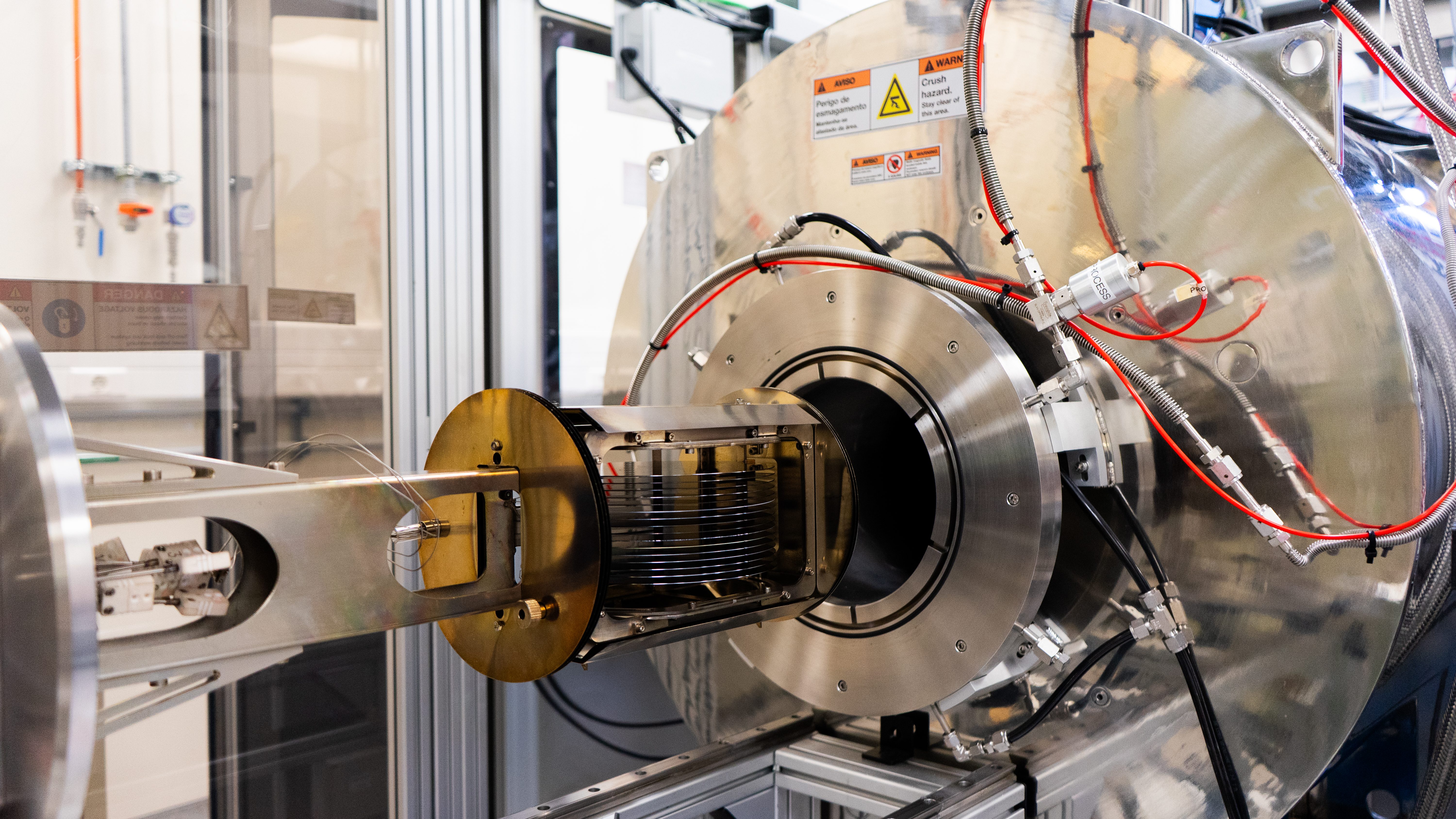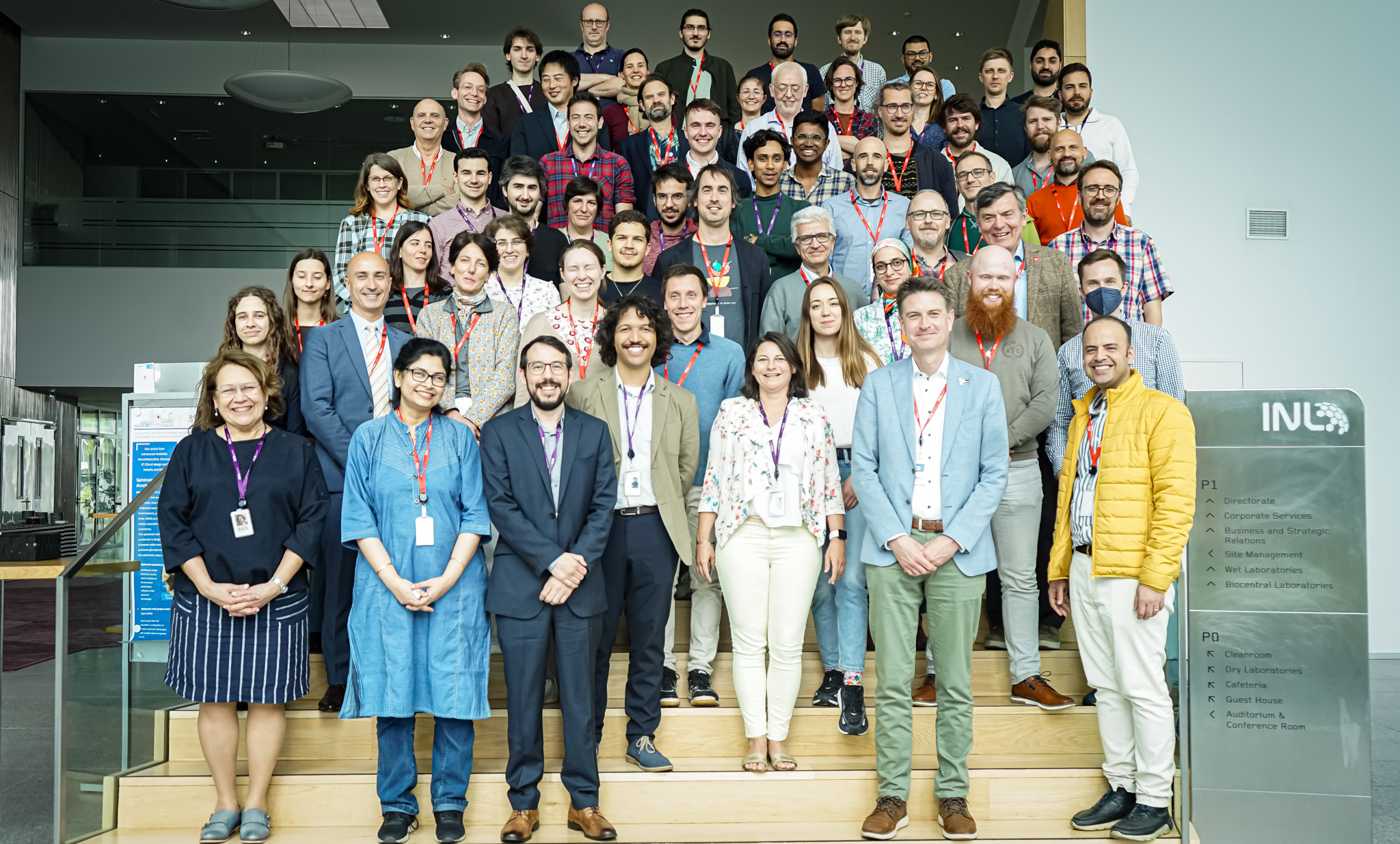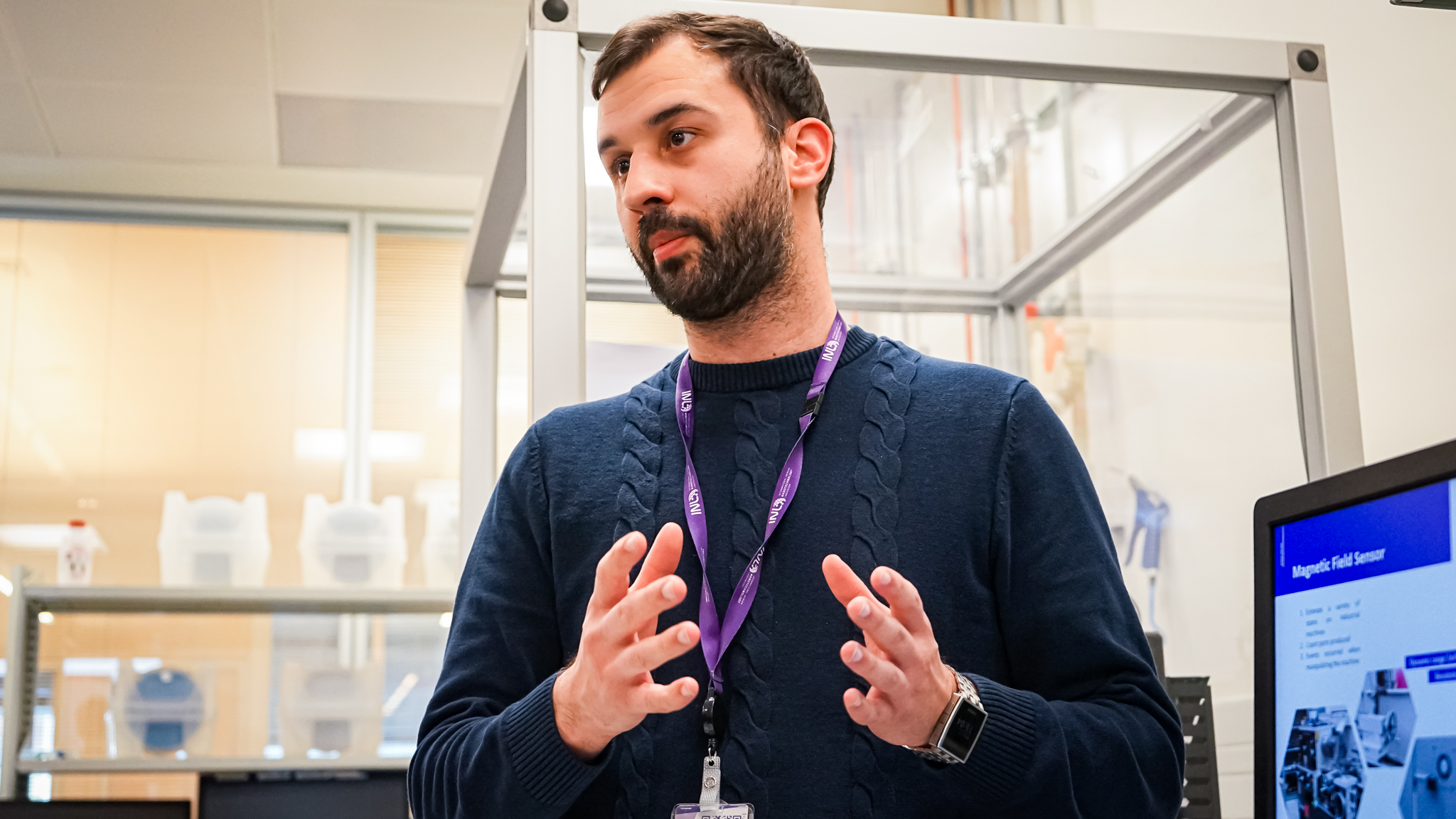
Spintronics for neuromorphic computing: a breakthrough in energy-efficient information processing
October 6, 2023
In a recently published paper, the Spintronics research group describes a spintronic circuit as a basic programmable computing unit for neuromorphic computing. This circuit connects multiple spintronic devices with different functionalities in one circuit using a single fabrication process, which paves ways to fabricate complex neuromorphic computing systems.
Neuromorphic computing offers a hopeful way to tackle some significant problems we face in technology, like the high energy consumption when processing a lot of data at once, which is similar to how our brains work. The idea behind neuromorphic computing is to handle information using many small processing units all at once. These units can be quite simple and can be set up in different ways. So, a good implementation needs to be energy-efficient, take up less space, and work quickly. It should also be able to grow and adapt for use in networks with millions of devices.
INL researcher Tim Böhnert explains that “the computer memories should keep their memory over long periods and the processing units should activate above a certain threshold value. Thus, we are looking for other important properties such as non-volatility of the memories and non-linearity of the processing component.”
In this paper, researchers investigated one of the top candidates for this solution based on spintronic nanodevices called magnetic tunnel junctions. Tim Böhnert adds “Spintronics simply describes that this nanodevice makes use of not just the electrical properties of the electrons, but also the more exotic spin property of the electrons.”
For more detailed information, you can access the full publication here, or the Behind the Paper blog post written by INL researcher Tim Böhnert.
This work was funded by the EU project SpinAge (No 899559).



